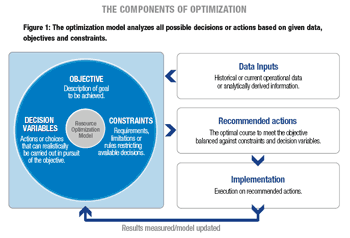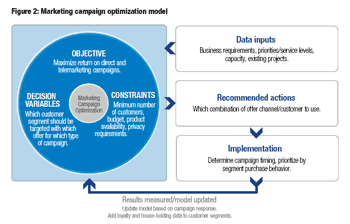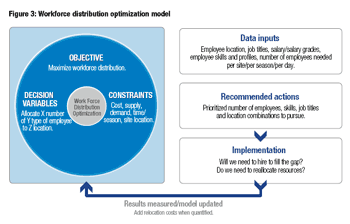The Big Picture of Business: Putting Budgeting Into Perspective, The Bigger Picture of Strategic Planning
Frame of reference is everything in business. Different people within the same organization have contrasting views as to the Business They’re Really In.
The term Budgeting gets tossed around in many ways. Budgets get blamed for gridlock. Budgets get politicized.
Budgets get more attention than the umbrellas under which they rightfully belong: Strategic Planning and Visioning.
Budgeting by itself is a minor piece of business strategy. By itself, Budgeting does not constitute full-scope planning and business strategy. Budgeting is a peg in the process.
Questions to follow in Budgeting as part of Strategic Planning and Visioning processes include:
- Does this process increase your accountability to funding sources and to the public?
- Are budgeting measures used to manage performance?
- Is the performance management system focused upon outcomes?
- Are the key measures the best representation of progress of the institution?
- Can the benchmarking information be accessed regularly?
- How well can management interpret and apply findings to the decision process?
- Does your strategic plan adequately describe what you do?
- Does the strategic plan provide necessary guidance to the activities you will measure?
- How diverse is the planning committee?
- Do performance measures provide an early warning system for problems?
- How do you handle crisis management and preparedness?
- Have you prioritized and fully defined key measures and non-key measures?
- Have you done scenario planning of measures beyond your immediate control, i.e. external factors which profoundly impact your livelihood?
- Do the measures address both internal management and external perceptions and accountabilities?
- Performance measures should be included in contracts with all resources, such as adjuncts, vendors, suppliers. Supply chain management should be implemented. Quality management should be implemented.
- Adjustments must be periodically made to target markets, definition of terms and modification of strategies.
Organizations start out to be one thing, but they evolve into something else. In their mind, they’re one thing. Other people think they are something else. Priorities change. Dedicated providers of the service stated in the original company mission become frustrated when they don’t understand the reasons for shifting priorities.
Most often, what organizations say they do in external promotions to potential customers actually ranks low on the actual priority list. That occurs due to the agendas of individuals who guide the organization…departing from the core business for which founders were presumably educated and experienced. Add to that the harsh realities of doing business and staying competitive.
Here is an average priority ranking for companies-organizations:
- Revenue volume and its rewards (bonuses for key management).
- Growth, defined as increasing revenues each year (rather than improving the quality of company operations).
- Doing the things necessary to assure revenue (billings, sales, add-on’s, marketing). Keeping the cash register ringing… rather than focusing upon what is being sold, how it is made and the kind of company they need to be.
- Running a bureaucracy.
- Maintaining the status quo. Keeping things churning. Making adjustments, corrections or improvements only when crises warrant (band-aid surgery).
- Glory, gratification and recognition (for the company and for certain leaders).
- Furthering stated corporate agendas.
- Furthering unwritten corporate agendas.
- Courting favor with opinion leaders.
- Actually delivering the core business. Making the widget itself. Doing what you started in business to do…what you tell the customers that you do.
- Doing the things that a company should do to be a good company. Processes, policies and procedures to make better widgets and a better organization.
- Customer service, consideration or follow-up beyond the sale.
- Looking after the people, in terms of training, empowerment, resources and rewards.
- Giving back to those who support the company.
- Advancing conditions in which core business is delivered.
- Walking the Talk: ethics, values, quality, vision.
- Giving back to the community, industry, Body of Knowledge.
People in the organization who do things below the top nine priorities have vastly different perceptions of the organization, its mission, their role and the parts to be played by others:
- Some jockey for position… to make their priority seem to advance higher.
- Some keep people on the low rungs in check, assuring that their priorities remain low.
- Some become frustrated because others’ priorities are not theirs.
- Some build fiefdoms within the organization to solidify their ranking.
- Some do their job as well as possible, hoping that others will recognize and reward their contributions.
- Some don’t think that they’re noticed and simply occupy space within the organizational structure.
- Some try to take advantage of the system.
- Some are clueless as to the existence of a system, pecking order, corporate agendas, company vision or other realities.
7 Steps Toward Getting Budgets Accepted More Readily:
- Commitment toward strategic planning for your function-department-company.
- Know your values.
- Refine your values.
- Control your values.
- Add value via internal services.
- Take ownership of your values.
- Continue raising the bar on values.
7 Stages in Making a Case for Business Funding:
- Link to a strategic business objective.
- Diagnose a competitively disadvantaging problem or an unrealized opportunity for competitive advantage.
- Prescribe a more competitively advantaged outcome.
- Cost the benefits of the improved cash flows and diagram the improved work flows that contribute to them.
- Collaborate with others.
- Maintain accountability and communications toward top management.
- Contribute to the organization’s Big Picture.
Rules for Budgeting-Planning:
- Use indicators and indices wherever they can be used.
- Use common indicators where categories are similar, and use special indicators for special jobs.
- Let your people participate in devising the indicators.
- Make all indicators meaningful, and retest them periodically.
- Use past results as only one indicator for the future.
- Have a reason for setting all indicators in place.
- Indicators are not ends in themselves…only a means of getting where the organization needs to go. Indicators must promote action. Discard those that stifle action.
Base Budgets on Value, Not on Cost
- Readily measurable values:
- Time and cost of product development-service delivery cycles.
- Reject, rework and make-good rates.
- Downtime rates and meantime between downtimes.
- Meantime between billings and collections.
- Product-service movement at business-to-business levels.
- Product-service movement at retail levels.
- Product-service movement in the aftermarket (re-sales, repeat business, referrals, follow-up engagements).
- Values in terms of savings:
- Time and motion savings.
- Inventory costs.
- Speed of order entry.
- Values in terms of efficiencies:
- Meantime between new product introductions.
- Forecast accuracy, compared to actual results.
- Speed, accuracy and efficiency of project fulfillment.
- Productivity gained.
- Continuous quality improvement within your own operation.
- Values which benefit other aspects of the company operation:
- Quality improved on behalf of the overall organization.
- Creative new ideas generated.
- Empowerment of employees and colleagues to do better jobs.
- Information learned.
- Applications of your work toward other departments’ objectives.
- Satisfaction in your service elevated.
- Voiced-written confidence, recognition, referrals, endorsements, etc.
- Capabilities enhanced to work within the total organization.
- Reflections upon the organization’s Big Picture.
- Contributions toward the organization’s Big Picture (corporate vision).
About the Author


 All organizations are resource limited and it is this limitation that forces executives and managers to become effective at prioritizing the deployment of company assets or risk marketplace failure. This reality places effective resource management at the heart of what it means to be a StrategyDriven organization – the deployment of organizational resources for the optimal achievement of mission goals.
All organizations are resource limited and it is this limitation that forces executives and managers to become effective at prioritizing the deployment of company assets or risk marketplace failure. This reality places effective resource management at the heart of what it means to be a StrategyDriven organization – the deployment of organizational resources for the optimal achievement of mission goals. Step 1: Define the objective to reflect organizational mission and strategy
Step 1: Define the objective to reflect organizational mission and strategy Step 3: Define the conceptual resource optimization model
Step 3: Define the conceptual resource optimization model  Step 5. Implement and update the model
Step 5. Implement and update the model 


 The spike in demand for consultants, services, and products around the first of the year (or in the government’s case the beginning of October) appears to be a natural part of the business cycle. The fact that there is an onrush in spending, however, suggests the existence of an artificial driver. Truth be told, it’s the time of year when many companies replenish their budgets and subsequently start or restart their projects – all at the same time. And while there may be a certain logic to this occurrence from a dollars and cents perspective, simultaneously launching so many projects challenges the organization from a human resource perspective, namely, that there are often not enough people within the organization to staff all of these projects at the same time.
The spike in demand for consultants, services, and products around the first of the year (or in the government’s case the beginning of October) appears to be a natural part of the business cycle. The fact that there is an onrush in spending, however, suggests the existence of an artificial driver. Truth be told, it’s the time of year when many companies replenish their budgets and subsequently start or restart their projects – all at the same time. And while there may be a certain logic to this occurrence from a dollars and cents perspective, simultaneously launching so many projects challenges the organization from a human resource perspective, namely, that there are often not enough people within the organization to staff all of these projects at the same time. Market changes can make once plentiful resources scarce. The recent retirement eligibility of Baby Boomer generation workers and the relatively small size of the follow-on Generation X workforce represents one example of a market change that is creating a shortage of experienced workers in many industries. While this change could be readily anticipated, others such as government sponsored large scale infrastructure projects which consume significant quantities of materials, heavy equipment, and personnel are less predictable. Thus, it is important for organizations to identify needed strategic resources and assess their market availability on an ongoing basis.
Market changes can make once plentiful resources scarce. The recent retirement eligibility of Baby Boomer generation workers and the relatively small size of the follow-on Generation X workforce represents one example of a market change that is creating a shortage of experienced workers in many industries. While this change could be readily anticipated, others such as government sponsored large scale infrastructure projects which consume significant quantities of materials, heavy equipment, and personnel are less predictable. Thus, it is important for organizations to identify needed strategic resources and assess their market availability on an ongoing basis.